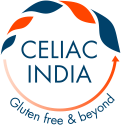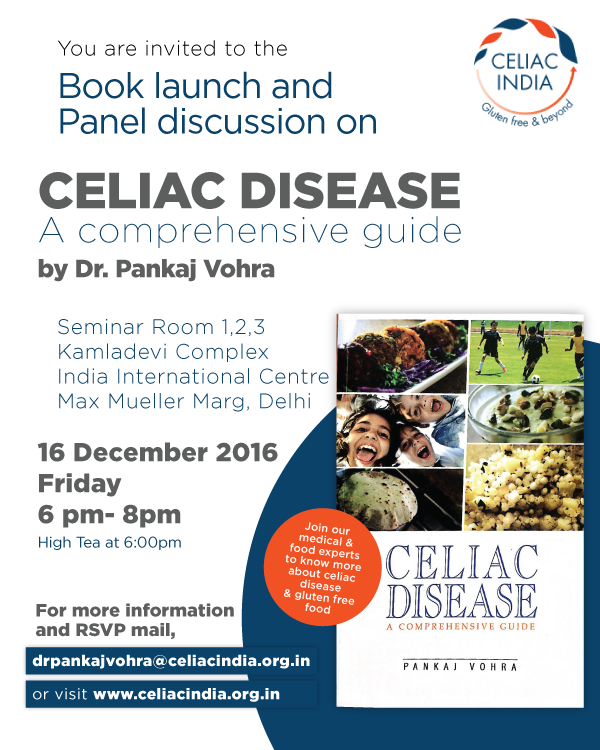Reading food labels
Food labels are crucial for a celiac as it’s important to know if the various ingredients and additives listed on a packaged food are gluten free and whether the item has been prepared in a gluten free environment.
In countries where gluten free laws have been laid down, manufacturers label the food products accordingly which makes it easy for individuals with celiac disease to know if the product is safe to consume. (Government of India has issued a draft gazette notification in February 2015 with respect to gluten and non gluten food. Read more here)
In the absence of gluten free legislation at present, it is difficult for celiac individuals in India to understand which food items, food additives or ingredients on the label are safe for them. It is our endeavor to help you understand these additives better and we hope to bring to you our interaction with leading food industry experts about the same.
An attempt has been made here to draw a basic guideline which will help you read and understand the ingredients and additives for food items manufactured in India.
Words which DEFINITELY mean gluten
1. Any ingredient or food additive which has wheat or words related to wheat in its name:
- Wheat in its name like hydrolyzed wheat starch, wheat germ oil, wheat flour etc. ( wheatgrass should be avoided too unless tested for gluten)
- Names of different forms of wheat – bulgur, cracked wheat (daliya), wheat bran, wheat flakes, semolina (sooji), Rava, Couscous etc.
- Names of different varieties of wheat – durum, emmer, einkorn, farro, kamut, spelt (Apart from durum, other names are rarely seen on Indian products)
- Triticum in its name – which is the Latin word for wheat
2. Any ingredient or food additive which has barley or words related to barley in its name
- Barley in its name
- Malt in its name – malt syrup, malt flavoring, malt extract etc. (Malt is mostly made out of barley)
- Hordeum in its name- which is the Latin word for barley
3. Atta
4. Bread, bread-crumb0
5. Flour: Plain flour, bleached flour, brown flour, enriched flour, refined flour, all-purpose flour etc.
6. Maida
7. Oats or any ingredient which has the Latin for oats, Avena sativa, in its name
8. Rye or the Latin for rye, Secale cereale
9. Triticale –This grain is a cross between wheat and rye
Words which MAY mean gluten
Some words strongly indicate the presence of gluten. These words could be part of a product name or its description, or description of a dish in a restaurant menu.
1. Bran
2. Breaded
3. Cereal
4. Coated/edible coating
5. Cookie
6. Cracker
7. Crumbs
8. Crunchy
9. Dusted
10. Encrusted
11. Filler
12. Thickener
13. Wafer
Additives which MAY HAVE gluten
We do not have information about food additives manufactured in India but listed below are some of the commonly used food additives which are suspected to have gluten. These can be derived from gluten (wheat, barley, rye) or non-gluten sources (e.g., corn, potato, tapioca). This is dependent on the manufacturer or at times the country wide manufacturing practice.
1. Brown rice syrup
2. Carriers used for mono and di-glycerides
3. Dextrate
4. Dextrimaltose
5. Dextrin
6. Dried glucose syrup
7. Enzymes
8. Food additives with color in their name, e.g.: Artificial colour, Caramel colour, Natural colour, Synthetic colour
9. Food additives with flavor/ flavouring in their name, e.g., Artificial flavor, Synthetic flavor, Natural flavor, Smoke flavoring
10. Food additives with starch in their name, e.g.,Edible starch, Food starch, Modified food starch, Pregelatinized starch , Starch
11. Food additives with ‘vegetable’ in their name, e.g., Vegetable protein, Hydrolyzed vegetable starch, Vegetable starch
12. Golden syrup
13. Hydrolyzed plant protein
14. Maltose
15. Maltodextrin
Food manufacturers should be contacted to find out more about these additives. It is our endeavor to continuously interact with the local food industry and learn more from them.
Other tips
- An item may not have any gluten containing ingredient or additive but may get contaminated with gluten during the production cycle. Precautionary statements on food labels such as ‘may contain wheat’ or ‘manufactured in the same factory/ line as wheat’ indicate this. In countries where gluten free legislation has been defined, guidelines have also been laid down about the use of precautionary statements. But in the absence of similar guidelines in India, the absence of these precautionary statements on a food label may still not mean that the product is devoid of any contamination.
- Some companies in India have started labeling their products as gluten free (or declaring allergens like wheat, milk, egg etc.in their products) This is extremely beneficial to the gluten free members but in the absence of well – defined gluten free labeling laws, we would urge the customers to find out more about the labeling process, source of food additives, cross contamination, risks involved and whether the product has been tested for gluten by internationally recognized standards.
- One should remember to read labels each time as companies may change ingredients or suppliers or manufacturing facilities.
- ‘Wheat free’ label does not necessarily mean that the product is gluten free, since it could still contain barley or rye.
- Packaged products often have the customer service number, email and postal address of the manufacturer mentioned on the packaging. We urge you to write or call the manufacturer to learn about the gluten free status of the product. You could use the sample letter to write to them to further help your loved one to avoid getting ‘glutened’. It is your queries which will help the food industry understand about the need for gluten free labeling.

